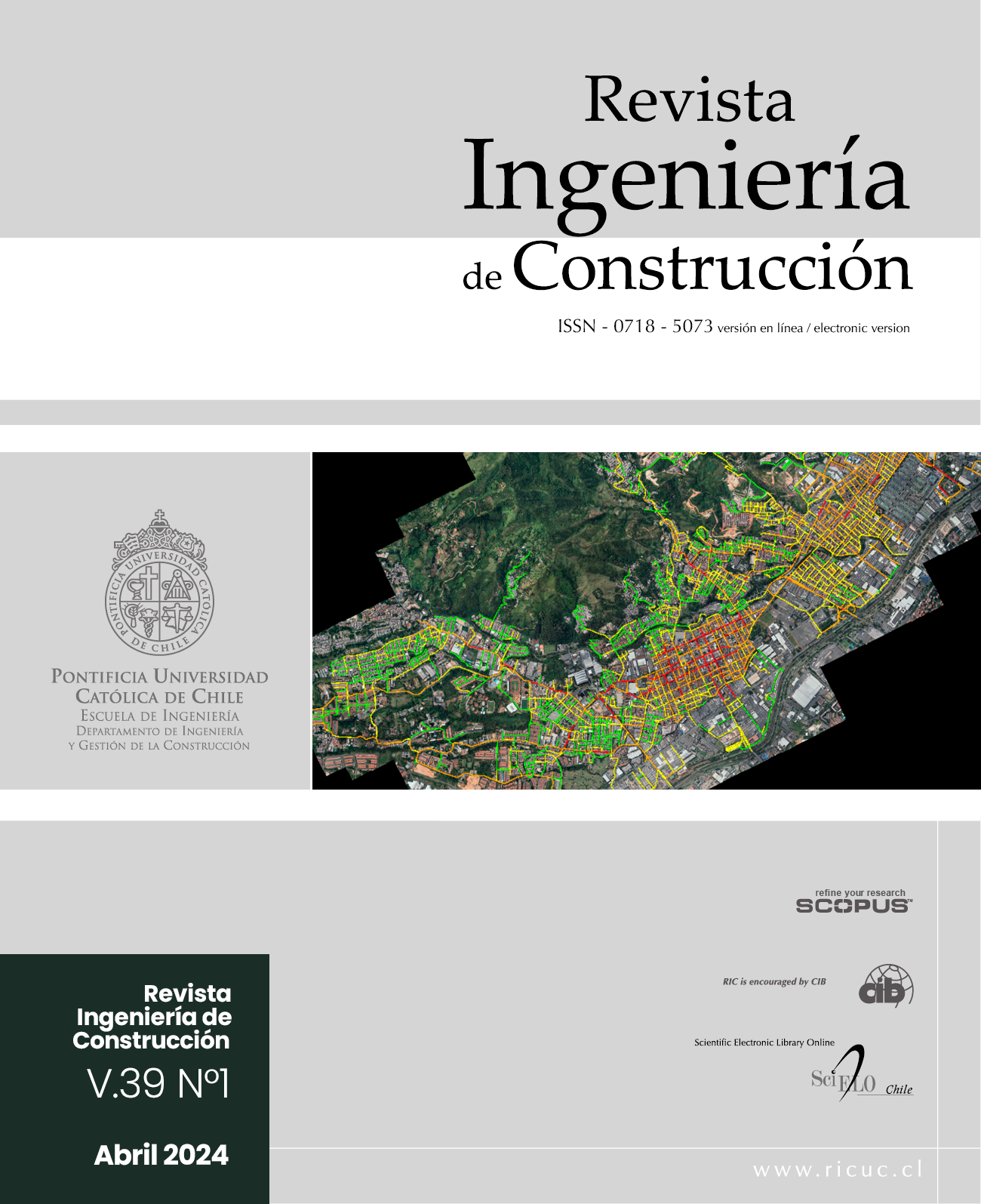Implementation of a smeared crack model in the finite element method and its application to two-dimensional nonlinear analysis of concrete beams
DOI:
https://doi.org/10.7764/RIC.00103.21Keywords:
analysis of concrete structures, fracture computational mechanics, smeared crack model, finite element methods, concrete beam subjected to bendingAbstract
This paper describes the implementation of a two-dimensional rotating smeared crack model within the framework of a nonlinear finite element analysis code, and its application to the mechanical behavior of the plain concrete. In this work, the formulation of three concrete softening law subjected to fracture Mode-I is adapted, considering infinitesimal strains, static loads and two-dimensional conditions. The rotating smeared crack model and the three softening laws are all implemented in Fortran language, into the open source software for nonlinear finite element analysis HYPLAS. The pre- and post-process for a graphical representation of the mesh and the results are done with GMSH or GiD. Finally, three experimental tests of concrete beams of other authors are simulated. The concentration of the displacement contour lines obtained in the simulation represents the crack patterns in the solid. The relationship between the applied load and the representative displacement in each analysis step describes the mechanical response of the beam. Other computed parameters were the crack opening and the principal stresses in the solid. The numerical results were satisfactory in comparison with the experimental tests.
Downloads
Downloads
Published
How to Cite
Issue
Section
License
Copyright (c) 2024

This work is licensed under a Creative Commons Attribution-NonCommercial-NoDerivatives 4.0 International License.

